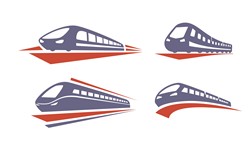Wider application of new materials for lighter and greener trains
New materials such as composites can help to build lighter rolling stock that will consume less energy and reduce emissions. While such materials are being used in the manufacturing of rolling stock parts, there is no way to certify a rail vehicle built mostly or entirely from non-metallic materials. The existing regulatory framework must be re-examined in order for the sector to recognise what changes are needed. With this in mind, the EU-funded REFRESCO(opens in new window) (Towards a regulatory framework for the use of structural new materials in railway passenger and freight carbodyshells) project set out to provide recommendations and the information needed to adapt the regulatory framework of railway carbody structures to the introduction of new materials. Work began by benchmarking the most promising new materials available to railway and other sectors, and examining rail certification processes and standards to identify gaps which need to be filled ahead of implementing new materials. Project partners studied fire, smoke and toxicity properties of resins, the noise, vibration and harshness of composite materials, and the advantages and disadvantages of composite materials concerning electromagnetic compatibility. They investigated existing standards, and characterised and modelled procedures for the new structural materials. This was done to understand the structural requirements for issues arising from the replacement of metal with high-performance composite materials in rail carbody shells. The REFRESCO team examined the crashworthiness of rail vehicles and parameters of the manufacturing process that influence final material properties. It proposed optimal prognostic, health management and non-destructive methods for new materials in rail carbodies. Lastly, recommendations were proposed for modifying current railway standards in order to enable the safe introduction of new materials in train carbodies. REFRESCO introduced a framework for the implementation of new structural materials for rolling stock. Standardisation has the potential to make the European rail industry a pioneer in using structural materials for trains.







